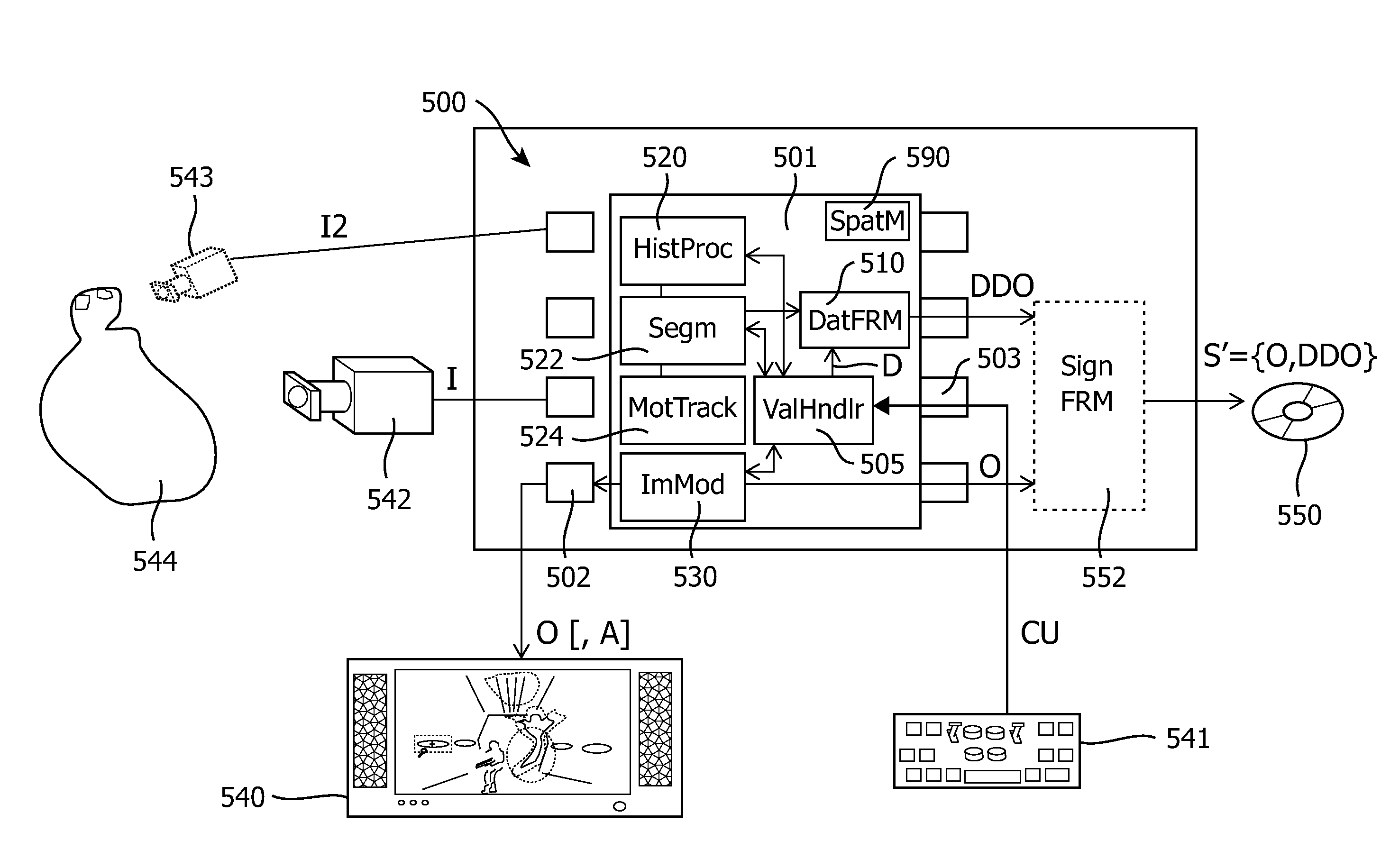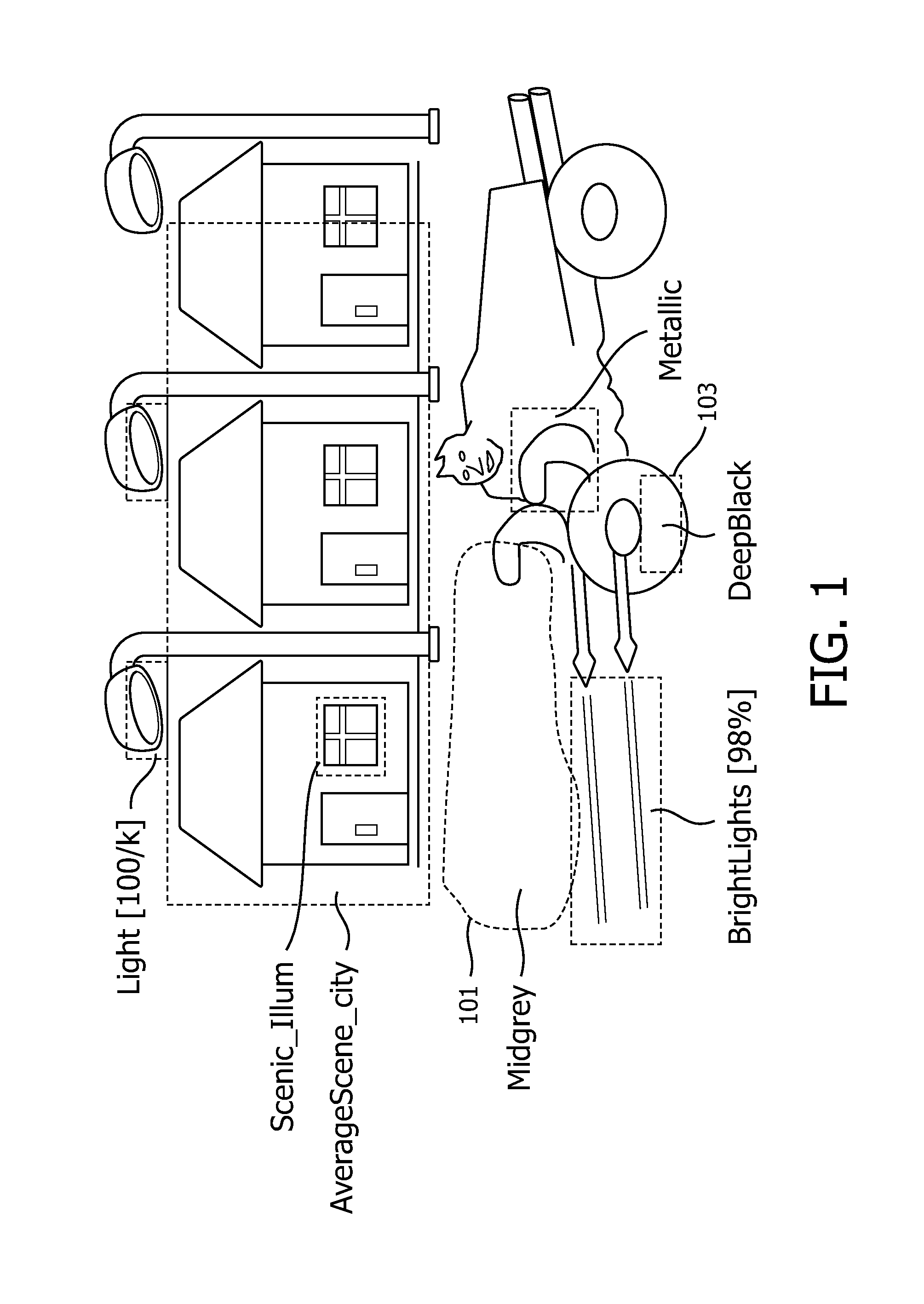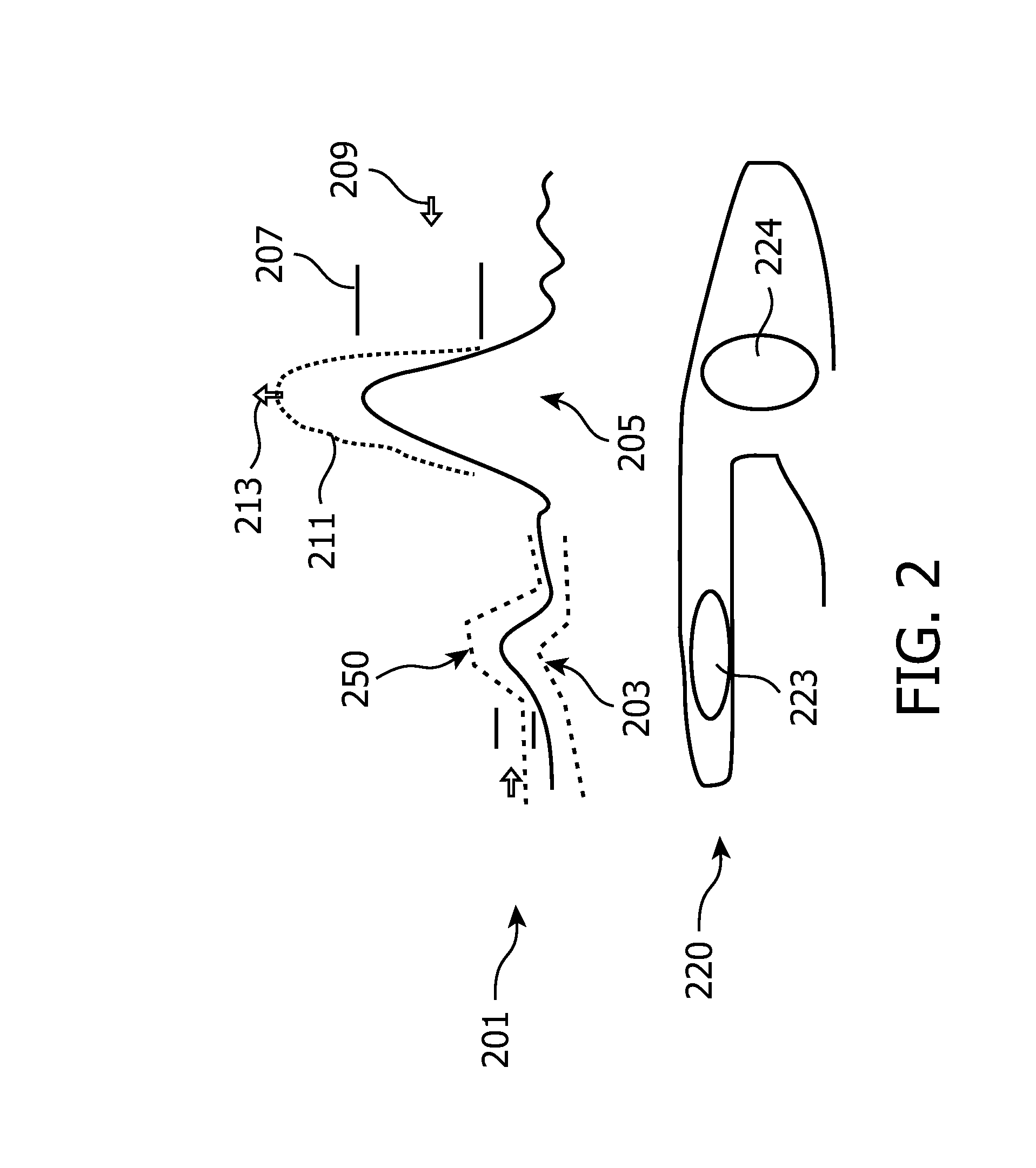Methods and apparatuses for processing or defining luminance/color regimes
a technology of luminance and color, applied in the direction of color television details, carrier indexing/addressing/timing/synchronisation, television systems, etc., can solve the problems of affecting the actual display in the viewer's living room became lcds, and the change in the display properties of color primaries, tone reproduction, etc., to achieve the effect of improving the controllability of what an artist can do
- Summary
- Abstract
- Description
- Claims
- Application Information
AI Technical Summary
Benefits of technology
Problems solved by technology
Method used
Image
Examples
Embodiment Construction
[0034]FIG. 1 shows an example of a batman movie, and some effects which can be realized on a HDR display with the current invention. At this moment, HDR displays can use whatever their internal processing is to “optimize” the image, which is however oftentimes so geared towards light output maximization (or saturation boost). So, the picture may not be shown optimally at all, perhaps even rendered in an ugly, unrealistic way (e.g., fluorescent bananas), at least not what the artist / creator would have originally intended. Typically, the boosts—even when parametrically, and dependent on image properties such as histograms—are of a “stretch-all” type boosting all pixels similarly. However, a disadvantage of such a “stretch-all” type boosting can be understood when, for example, boosting some road lights, one may not simply want the grey road around it to become increasingly bright similarly. In contrast, a more realistic rendering may depend on the distribution of color values on the r...
PUM
| Property | Measurement | Unit |
|---|---|---|
| luminance | aaaaa | aaaaa |
| luminance | aaaaa | aaaaa |
| luminance | aaaaa | aaaaa |
Abstract
Description
Claims
Application Information
 Login to View More
Login to View More - R&D
- Intellectual Property
- Life Sciences
- Materials
- Tech Scout
- Unparalleled Data Quality
- Higher Quality Content
- 60% Fewer Hallucinations
Browse by: Latest US Patents, China's latest patents, Technical Efficacy Thesaurus, Application Domain, Technology Topic, Popular Technical Reports.
© 2025 PatSnap. All rights reserved.Legal|Privacy policy|Modern Slavery Act Transparency Statement|Sitemap|About US| Contact US: help@patsnap.com



